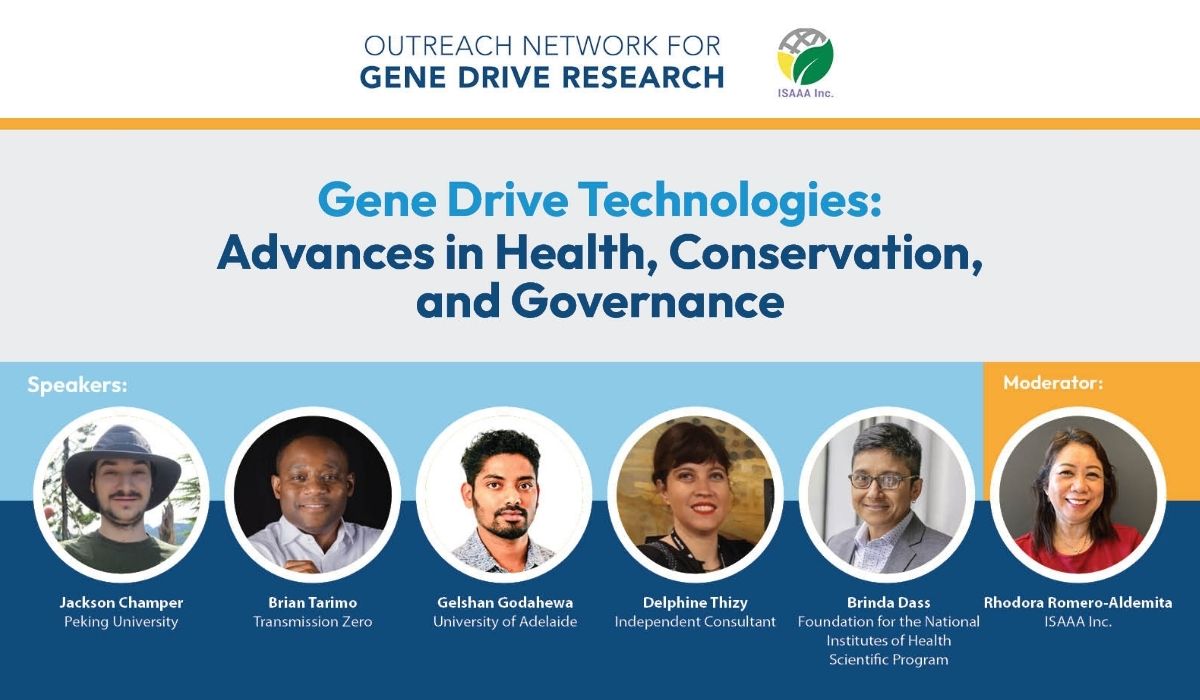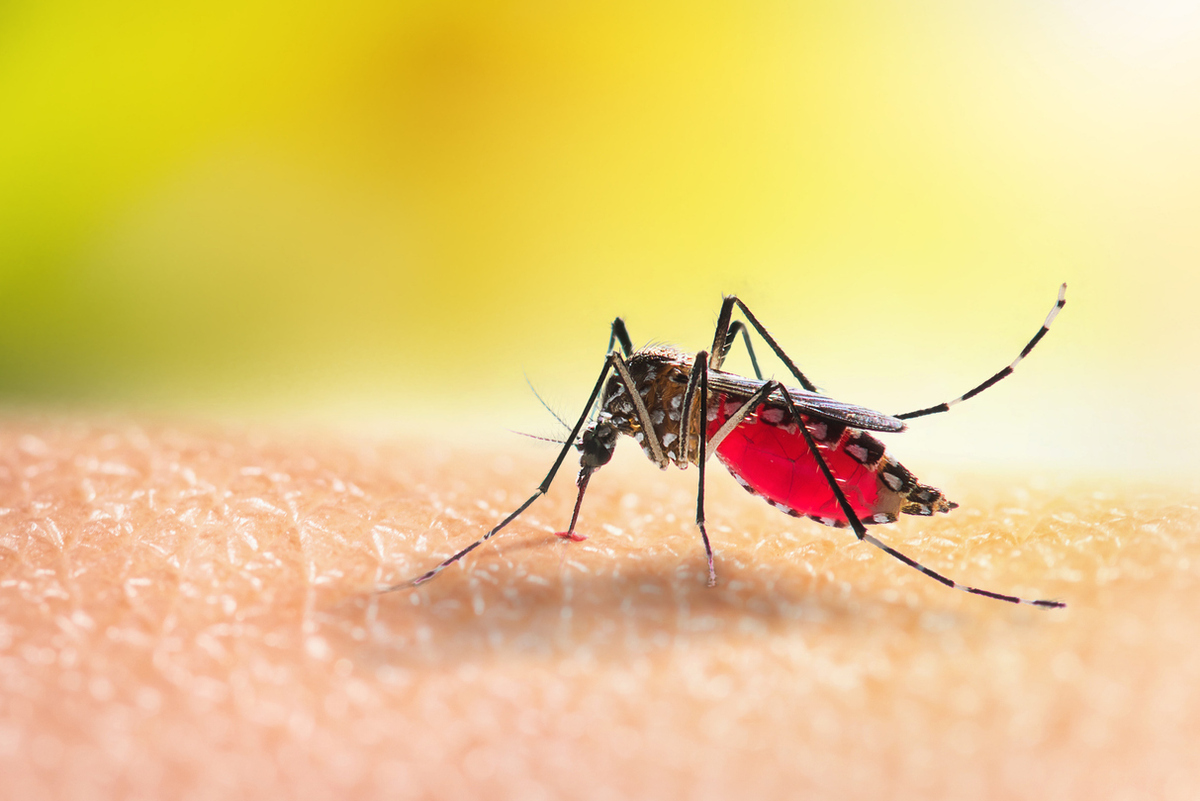Gene Drive Explained: How It Works, Why It Matters, and What the Regulations Say
| |
In 2024, the World Health Organization (WHO) reported that more than 17% of the global burden of infectious diseases is due to vector-borne diseases. Over 700,000 deaths are recorded annually, and more than 3.9 billion people are at risk of contracting dengue, the most prevalent viral infection transmitted by Aedes mosquitoes.
In the Intergovernmental Science-Policy Platform on Biodiversity and Ecosystem Services (IPBES) report in September 2023, the global cost of invasive species is over $423 billion per year and this amount has quadrupled every decade since 1970. Invasive mammals, such as mice, rats, rabbits, feral pigs, feral cats, and foxes, cost Australia US$20.19 billion from 1960 to 2017 and have been the major driver for almost all the 34 mammalian extinctions in the country since 1788.
According to Dr. Brian Tarimo, Lead Scientist at Transmission Zero, the current tools that we have to control vector-borne diseases have reached their limit of efficacy. Resistance is being developed, and habitat management and removal have been cumbersome. Fumigation has been a challenge for many countries all over the world. “The ease of doing this needs to be looked into. We need innovative tools to control these,” said Dr. Tarimo in a webinar organized by ISAAA Inc. in partnership with Outreach Network for Gene Drive Research.
Held on November 20, 2025, the webinar titled Gene Drive Technologies: Advances in Health, Conservation, and Governance gathered over 122 participants and a panel of experts from different countries to discuss the potential of gene drive technology in addressing health and environmental challenges brought about by mosquitoes and invasive species.

Gene Drive

In Mendelian inheritance, the single allele in the parent organism is inherited by half of the offspring. There is a 50/50 chance that the genetics are passed on from the parental line to the offspring line. But with gene drive, Dr. Tarimo said that there is nearly a 100% chance that the genetic element will be passed on to the offspring. “It ensures that our altered genes are able to spread from one generation to future ones. It can transform an entire population in a few generations,” Dr. Tarimo explained.
Dr. Tarimo said that there are two strategies in controlling vector-borne diseases: population suppression and population modification (replacement). In population suppression, gene drive disrupts an essential mosquito gene to make them sterile and reduce their reproductive capacity. On the other hand, population modification uses gene drive to propagate anti-malarial effects by introducing a gene into the mosquito genome to inhibit the mosquito from transmitting the disease.
“Gene drive is a potentially powerful strategy for using genetics to alter an entire wild population,” said Dr. Jackson Champer, Principal Investigator at Peking University in Beijing, China. Dr. Champer also explained a type of gene drive called self-limiting suppression, which is a temporary gene drive that goes away on its own. In self-limiting suppression, the frequency of the gene drive will slowly decline once the release has stopped, and the population will recover. Dr. Champer said that the advantage of improved self-limiting suppression is that we can get the release of at least 10 times lower than Sterile Insect Technique (SIT) or female-specific release of insects carrying dominant lethal genes (fsRIDL) and still eliminate the target population.
Gene Drive Applications in Mosquitoes and Invasive Species

One of the most interesting applications of gene drive is in mosquitoes, such as in Anopheles gambiae for malaria and Aedes aegypti for dengue, Dr. Champer said. In Africa, research and implementation efforts on gene drive mosquitoes vary by country, with Burkina Faso, Mali, Uganda, and Cape Verde focusing on suppression strategies, while Tanzania, São Tomé and Príncipe, and Comoros are working on replacement strategies.
In Tanzania, a collaborative project called Transmission Zero was established by the Imperial College London and the Ifakara Health Institute in collaboration with National Institute of Medical Research Tanzania (NIMR) and Swiss Tropical and Public Health Institute (TPH) to work on transgenic mosquito strain (MM-CP) engineered to express antimicrobial peptides (AMPs), such as Magainin 2 and Melittin in the mosquito midgut.
Dr. Tarimo explained that when the mosquito takes a blood meal, the carboxypeptidase (CP) promoter triggers the production of these AMPs. As a result, parasite colonization in the midgut is severely inhibited and prevents the parasite from developing to the stage needed for transmission. Their project showed that mosquitoes carrying the MM-CP modification exhibited “stunted” midguts and delayed development. During the mosquito’s next blood meal, sporozoites are no longer present in their salivary glands. Therefore, these mosquitoes cannot transmit the disease.
Currently, Transmission Zero is in a contained phase and has not gone further where they can go beyond the laboratory. According to Dr. Tarimo, Transmission Zero will soon embark on small-scale isolated releases (with effector strain only), small-scale open releases (one with the Cas9 drive and one with the effector), and eventually on large-scale open releases.
Meanwhile, the first proof of concept for mammalian gene drive was demonstrated in a study conducted by Dr. Gelshan Godahewa, a Postdoctoral researcher at the University of Adelaide’s Genome Engineering Laboratory, and colleagues in 2022. According to Dr. Godahewa, one of the major milestones in rodent control is the t-CRISPR, the first validated genetic biocontrol strategy for rodent population suppression. The Office of the Gene Technology Regulator (OGTR) granted approval for contained research into this technology.
In their current work, the team is preparing to release t-CRISPR mice on Tevanade Island in Western Australia, where the mice have a slightly different genetic background compared to the mice on the mainland. With t-CRISPR, even if the mice escape from the island, the gene drive will not spread to other mouse populations. They are now conducting enclosure trials with the Commonwealth Scientific and Industrial Research Organisation (CSIRO) to test how t-CRISPR performs in natural conditions.
According to Dr. Godahewa, the research on gene drives is expanding beyond rodents to other vertebrates. However, its applications to larger mammals, like cats and foxes, remain far more challenging due to longer timeframes and technical hurdles. Aside from that, gene drive applications are also progressing in plants, with studies demonstrating over 90% transmission bias.
Regulatory Considerations in Gene Drive
The Cartagena Protocol on Biosafety to the Convention on Biological Diversity (CBD) is the main supplementary protocol that has an effect on genetically modified organisms (GMOs), including gene drives that contain GMOs, according to Dr. Brinda Dass, Scientific Program Manager and Policy Lead for Gene Drive at the Foundation for the National Institutes of Health (FNIH) GeneConvene. Dr. Dass shared that during the COP16-MOP11, the majority of the parties that are signatories to the Cartagena Protocol welcomed an additional voluntary guidance for risk assessment of engineered gene drives containing living modified organisms (LMOs).
Dr. Dass said that gene drives have also been part of the conversations at the International Union for Conservation of Nature (IUCN) since 2016, primarily in terms of their role within synthetic biology and conservation. At the latest IUCN Congress in Abu Dhabi, two motions on gene drives were raised: Motion 133 and Motion 87. Led by non-government organizations (NGOs), Motion 133 called for a moratorium on genetic engineering in wild ecosystems, but the motion was not approved. On the other hand, Motion 87 (now the IUCN Policy on Synthetic Biology) was adopted and became the organization’s first global policy on synthetic biology.
“Gene drive mosquitoes do not have a clear existing WHO policy recommendation at this point,” said Dr. Dass. However, it must be noted that there is a WHO process where a policy recommendation can be reached through various advisory groups, making stakeholder engagement a crucial part of gene drive research.
Engaging different sets of stakeholders ensures that the development and decision-making processes of gene drive technology are grounded in ethical responsibility, transparency, and respect for human rights. According to Delphine Thizy, former Stakeholder Engagement Manager of Target Malaria, “community and stakeholder engagement should be undertaken early, at the start of the phased testing pathway for GM mosquitoes, and be tailored, iterative, and sustained.”
Ms. Thizy noted that engagements require different objectives and strategies for different stakeholders. A case-by-case engagement strategy is essential in gene drive research, as approaches must be adapted to the local context. What works in Australia will be significantly different from what is appropriate in Tanzania. She explained that an important part of this strategy is the strong emphasis on co-development. This will ensure that stakeholders, especially the people and communities directly affected, actively participate in shaping the engagement process and influencing project decisions.
“We are in a time of disinformation in general. Science is under attack, and so is gene drive. It is a concerted effort that researchers and regulators must work together to avoid disinformation impacting how an innovation can be adopted,” Ms. Thizy said. This is a call for all of us to ensure that people have access to accurate, reliable information so that their decisions are grounded not in fear or falsehoods, but in knowledge and informed choice.
Watch the recorded webinar on YouTube and download the presentation at the ISAAA Webinars page. Subscribe to Biotech Updates to stay updated with the latest news and developments in biotechnology.
| Archive | Older Post |
Science Speaks is ISAAA Inc.'s official blog. Weekly blog articles, authored by ISAAA writers, partners, and invited contributors, aim to help share, disseminate, and promote scientific knowledge and its vital role in achieving global agricultural sustainability and development. Your support to Science Speaks will help us achieve this goal. You can help us by donating as little as $10.

